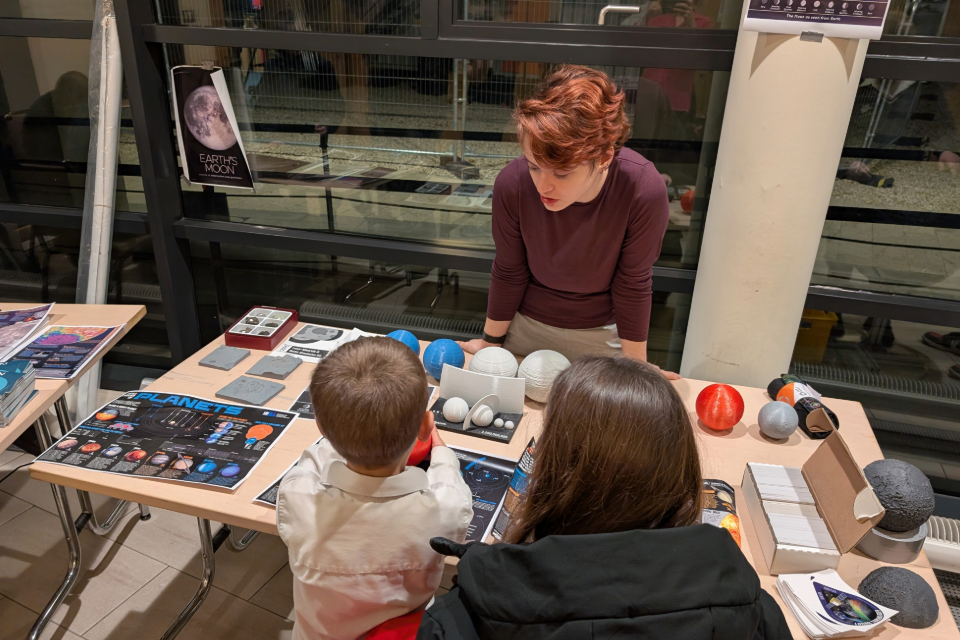On 6 November, the Department of Physics hosted its annual International Observe the Moon Night, inviting members of the public to explore our nearest celestial neighbour through telescopes, experiments, and conversations with planetary scientists. Despite an uncertain weather forecast, the event drew 66 visitors, including many families, who joined staff and students outside the Martin Wood Complex for an evening of lunar discovery.
Now in its fifth year, the Oxford celebration was led by Dr Katherine Shirley and a team of around ten researchers and students from the Department’s planetary science community. Visitors enjoyed hands-on demonstrations, including an infrared camera display revealing how light travels through different materials, and a crater-formation activity that proved particularly popular with children.

When clouds briefly covered the Moon, the team continued engaging visitors indoors, answering questions about the science and history of lunar exploration. Many expressed surprise at the depth of Moon research taking place in Oxford, with one attendee remarking:
'I never knew you did this stuff — I was surprised!'
Others were fascinated to learn about the Moon’s crucial role in stabilising Earth’s climate, and about what lunar craters reveal about the solar system’s violent past. One young participant noted:
'When a big asteroid hits a moon or whatever, it makes waves!'
'It’s always a joy to share our research with the public and to see how inspired people are by the Moon,' reflects Dr Shirley, who studies lunar geology and planetary processes. 'Even through the clouds, there was real excitement and curiosity — and that’s what these evenings are all about.'
The event was part of the International Observe the Moon Night initiative, coordinated globally by NASA to encourage people everywhere to learn about lunar science, take part in skywatching activities, and celebrate cultural and personal connections to the Moon.
For those unable to attend in person, Oxford’s lunar research team has also produced a series of short YouTube videos exploring topics such as “Is There Water on the Moon?”

